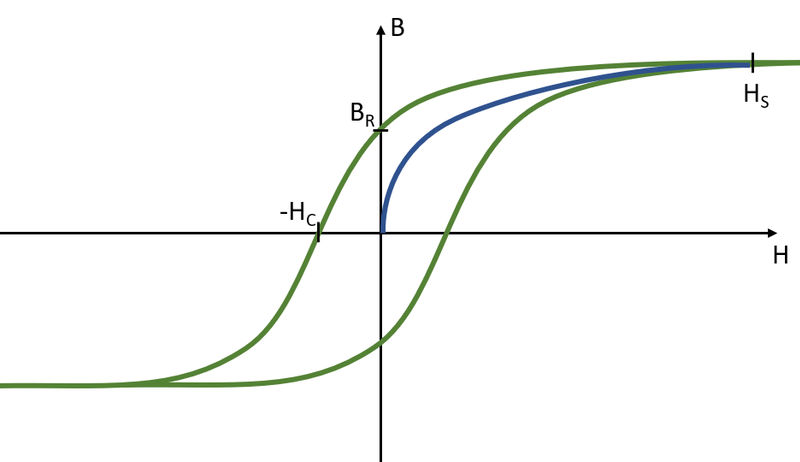For product requests contact us by using the
- Contact formular,
- Email (sales@suragus.com) or
- Phone (+49 351 32 111 520).
Measurement by Eddy Current Testing | Definition | Classifications | Hysteresis | Applications
Quantitative permeability measurements are not possible with Eddy Current Testing or Barkhausennoise Testing yet, but SURAGUS is applying both technologies to derive related parameters from layers with magnetic content. Thin films with magnetic material content such as Cobalt, Nickel or Iron are used in various industries for various reasons.
High Frequency Eddy Current Systems are very sensitive to magnetic properties. In many cases the permeability is enhancing the measurement effect, which can be used to derive other parameters such as material thickness from those films.
Please feel free to consult with the SURAGUS for the ability to characterize your magnetic films.
In electromagnetism permeability is the degree of magnetization of a material in response to a magnetic field. It is defined as the property of the material to allow the magnetic line of force to pass through the object. The magnetic line of force is directly proportional to the conductivity of the material.
Magnetic permeability is usually described by µ. The unit of magnetic permeability is H/m (Henry per meter) or N*A-2 (Newtons per Ampere squared). The permeability of free space, when a magnetic field is forming in vacuum, is called permeability constant µ0. Until 2019 µ0 was defined as magnetic constant with the value of μ0 = 4π × 10−7 H/m or 12.57×10−7 H/m.
Since then a revision of the International System of Units came into effect. µ0 turned in to a value that needs to be assessed experimentally, by 4π × 1.00000000082(20)×10−7 H⋅m−1
Permeability is depending from a variety of parameters, such as position in the medium, applied frequency of the magnetic field, humidity, temperature etc.
The magnetic permeability of a material equals the ratio of field intensity B to flux density H of a material.

Relative magnetic permeability of any material is the comparison of permeability concerning air or vacuum:

Magnetic materials can be classified according to their permeability µr:
The permeability of diamagnetic materials is slightly smaller than permeability in vacuum. These materials or elements tend to push the magnetic field out of their body. They magnetize themselves against the external magnetic field. Paramagnetic elements increase the magnetic field by aligning their atomic magnetic moments according to the external magnetic field. Ferromagnetic materials and elements tend to have very high permeability. These materials are historically being applied in electronics, such as coils, motors and transformer.
The permeability in ferromagnetic materials is not linearly dependent from the external magnetic field. The behavior of ferromagnetic materials is often described by the hysteresis curve. Depending on the application different definitions of permeability are being used. Beside the typical calculation as mentioned above the differential permeability, as progression of the hysteresis curve. The permeability µ equals the ratio of the progression of

Due to magnetic saturation and magnetic remanence the permeability is not constant.

For product requests contact us by using the